
UX research is key to creating products people love. It helps designers understand user needs, behaviors, and pain points. With this knowledge, they can make better design choices.
There are many UX research methods. These range from surveys to usability testing. Using a mix of methods gives the most complete picture of the user experience. Some methods gather numbers and statistics. Others collect stories and opinions. Together, they paint a full picture.
Good UX research leads to better products. It can boost user satisfaction and business success. This guide covers the main UX research methods. It explains how to use them and when they work best.
Key Takeaways
- UX research methods include surveys, interviews, and usability tests
- A mix of qualitative and quantitative methods provides the most insight
- Effective UX research improves products and user satisfaction
Understanding UX Research
UX research helps create better products by studying users. It guides design choices and improves user satisfaction.
Defining UX Research
UX research is the process of learning about users and their needs. It involves collecting and analyzing data on how people use products. This data comes from surveys, interviews, and tests.
UX researchers use many methods to gather insights. They watch users try products. They ask questions about user goals and pain points. They also look at usage data and feedback.
The goal is to understand user behavior and preferences. This knowledge helps teams make better design choices.
The Importance of User Experience
Good user experience is key for product success. It affects how people feel about using a product. A positive experience can lead to loyal customers and good reviews.
UX research ensures products meet user needs. It helps catch problems early in the design process. This saves time and money on fixes later.
Products with good UX are easier and more enjoyable to use. They solve real problems for users. This leads to higher adoption rates and user satisfaction.
UX research also gives teams confidence in their decisions. It provides evidence to support design choices.
Planning Your UX Research Strategy
A solid UX research strategy helps teams gather valuable insights and make informed decisions. It focuses efforts, saves time, and ensures the right questions are answered.
Identifying Research Goals
Research goals shape the direction of UX studies. They align with business objectives and user needs. Teams should list key questions they want to answer. These might include:
- Who are our target users?
- What problems do users face?
- How do users interact with our product?
Clear goals help pick the right research methods. They also make it easier to measure success.
Determining the Scope of Research
Scope sets boundaries for UX research. It defines what will and won’t be studied. Teams need to consider:
- Time limits
- Budget constraints
- Available resources
- Product development stage
A well-defined scope keeps research focused and manageable. It prevents wasting effort on less important areas.
Selecting Appropriate UX Research Methods
Choosing the right methods is crucial for effective research. Different techniques suit different goals and stages of product development. Common UX research methods include:
- Surveys
- Interviews
- Usability testing
- Card sorting
- A/B testing
Teams should mix methods to get a full picture. Qualitative methods offer deep insights into user behavior. Quantitative methods provide measurable data. The choice depends on research goals, timeline, and resources.
Qualitative UX Research Methods
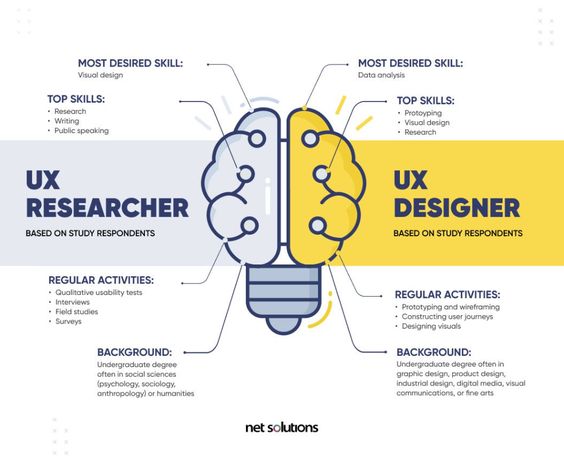
Qualitative UX research methods help gather in-depth insights about user behaviors, needs, and motivations. These approaches focus on collecting detailed, descriptive data through direct interaction with users.
Interviews and User Interviews
Interviews are one-on-one conversations with users to gain insights into their experiences and opinions. Researchers ask open-ended questions to learn about user preferences, pain points, and goals.
User interviews can be:
- Structured (following a set script)
- Semi-structured (using a flexible guide)
- Unstructured (allowing for free-flowing conversation)
Interviews work well for gathering detailed feedback on specific features or uncovering user needs. They give researchers a chance to probe deeper into user responses and clarify any confusion.
Focus Groups and Group Discussions
Focus groups bring together small groups of users to discuss a product or service. A moderator guides the conversation, asking questions and encouraging interaction among participants.
Benefits of focus groups include:
- Generating diverse ideas quickly
- Observing group dynamics
- Uncovering shared opinions and experiences
Group discussions can reveal unexpected insights as participants build on each other’s ideas. They’re useful for exploring new concepts or gathering feedback on prototypes.
Observation Techniques and Ethnographic Studies
Observation involves watching users interact with a product in their natural environment. Ethnographic studies take this further by immersing researchers in users’ daily lives over an extended period.
Key observation methods:
- Field studies
- Shadowing
- Fly-on-the-wall observation
These techniques help researchers spot behaviors and pain points users might not mention in interviews. They provide context for how products fit into users’ lives and routines.
Diary Studies and Contextual Inquiry
Diary studies ask users to record their experiences with a product over time. Participants log their thoughts, feelings, and actions related to the product use.
Contextual inquiry combines interviews with observation. Researchers watch users perform tasks in their own environment, asking questions to understand their thought process.
Both methods offer:
- Long-term insights into user behavior
- Real-world context for product use
- Detailed information on user needs and challenges
These approaches help uncover issues that might not appear in short-term studies or controlled environments.
Quantitative UX Research Methods
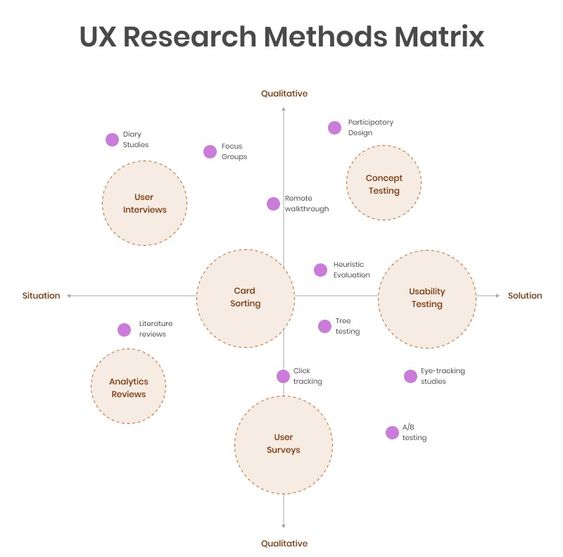
Quantitative UX research uses numbers and statistics to understand user behavior and preferences. These methods gather data from large groups of users to find patterns and trends.
Surveys and Questionnaires
Surveys help collect data from many users quickly. They use questions with set answer choices to get measurable results. Researchers can make online surveys or paper forms.
Good surveys have clear, unbiased questions. They often use rating scales or multiple-choice options. This makes the data easy to analyze.
Surveys work well for learning about user opinions and habits. They can reach users in different locations. But surveys may miss details that interviews can catch.
Card Sorting and Tree Testing
Card sorting helps organize website content. Users group topics into categories that make sense to them. This shows how people think about information.
There are two types: open and closed card sorting. In open sorting, users make their own groups. In closed sorting, they use preset categories.
Tree testing checks how well users can find information in a site structure. It uses a text-only version of a site map. Users try to find specific items in the structure.
Both methods give data on how users expect to find content. This helps create better website navigation.
Analytics and Data Analysis
Analytics tools track how users interact with websites and apps. They show which pages users visit most and how long they stay.
Common metrics include page views, bounce rates, and conversion rates. These numbers reveal user behavior patterns.
Data analysis turns raw numbers into useful insights. It can show which features users like or where they get stuck.
Big sample sizes make the results more reliable. But numbers alone don’t always explain why users act a certain way.
Analytics work best when combined with other research methods. This gives a fuller picture of the user experience.
Combining Qualitative and Quantitative Methods
UX researchers often use both qualitative and quantitative methods together. This approach gives a fuller picture of user needs and behaviors. It helps teams make better decisions about product design.
Mixed Methods Research
Mixed methods research combines qualitative and quantitative data collection. This strategy gives researchers a wider view of user experiences. It balances the depth of qualitative insights with the breadth of quantitative data.
For example, a team might start with user interviews to understand pain points. They could then follow up with a survey to measure how common those issues are. This mix of methods helps validate findings and spot trends.
Mixed methods can also reveal unexpected insights. Numbers alone might miss important context. Stories without data might not show the big picture. Together, they create a more complete understanding.
Triangulating Data for Robust Insights
Data triangulation uses multiple sources to confirm findings. This technique increases confidence in research results. It helps spot patterns and reduces the impact of biases.
Researchers might compare:
- Survey responses
- Interview transcripts
- Usability test results
- Analytics data
When different methods point to the same conclusion, it strengthens the insight. If results don’t match up, it can reveal areas that need more study.
Triangulation also helps teams prioritize issues. A problem that shows up in both qualitative and quantitative data is likely important to address. This approach leads to more reliable, actionable insights for product teams.
Usability Testing Essentials
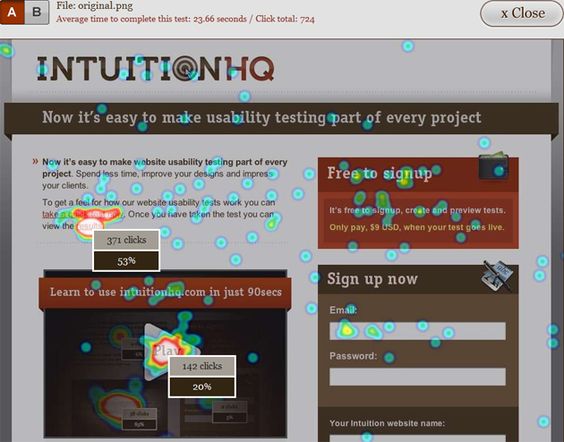
Usability testing helps find problems in product designs. It shows how real users interact with a product. There are different ways to do usability tests.
Moderated vs. Unmoderated Usability Testing
Moderated tests have a researcher guiding users. The researcher can ask follow-up questions. This gives deep insights. Unmoderated tests let users complete tasks on their own. These tests are cheaper and faster. They can reach more users.
Moderated tests work well for complex products. Unmoderated tests suit simple tasks. Both types have pros and cons. The choice depends on the project needs.
Lab-Based Usability Testing Techniques
Lab tests happen in a controlled setting. Users come to a special room. Researchers watch them use the product. They take notes on what users do and say.
Lab tests use tools like eye-tracking. This shows where users look on a screen. Some labs have two-way mirrors. This lets teams watch without being seen.
These tests give lots of data. But they can be expensive. Users might also act differently in a lab than at home.
Remote Usability Testing Practices
Remote tests let users try products from their own homes. This feels more natural. It’s also cheaper than lab tests. Remote tests can be moderated or unmoderated.
For moderated remote tests, researchers use video calls. They watch users’ screens and talk to them. Unmoderated remote tests use special software. It records users’ actions and thoughts.
Remote tests can reach users all over the world. But they may miss some details that in-person tests catch.
Heuristic Evaluation and Expert Reviews
These methods don’t use regular users. Instead, experts check the product. They look for problems based on usability rules.
Heuristic evaluation uses a set list of principles. Experts grade the product on each one. Expert reviews are less formal. Experts use their knowledge to find issues.
These methods are fast and cheap. But they might miss problems that only show up with real users. They work best with other testing types.
Analyzing and Interpreting UX Research Data
Turning raw UX research data into actionable insights requires careful analysis and interpretation. The process involves examining qualitative feedback, crunching quantitative metrics, and presenting findings clearly to drive design decisions.
Qualitative Data Analysis
Qualitative data gives rich insights into user behaviors and attitudes. Researchers often start by coding responses to spot patterns and themes. This involves tagging key ideas in notes, interview transcripts, and open-ended survey answers.
Common qualitative analysis methods include:
- Affinity diagramming
- Thematic analysis
- Sentiment analysis
Researchers look for recurring pain points, desires, and usage patterns. They may create user personas or journey maps to visualize findings. The goal is to uncover the “why” behind user actions and opinions.
Quantitative Data Metrics and Statistics
Quantitative data provides measurable insights through numbers and statistics. Key metrics often include:
- Task success rates
- Time-on-task
- System Usability Scale (SUS) scores
- Net Promoter Score (NPS)
Analysts use descriptive statistics like averages, medians, and standard deviations. They may run tests for statistical significance when comparing designs. Graphs and charts help visualize trends and patterns in the data.
Presenting Findings to Stakeholders
Clear communication of UX research findings is crucial for stakeholder buy-in. Effective presentations focus on actionable insights tied to business goals. Use a mix of data visualizations, quotes, and videos to bring the research to life.
Key elements of a strong UX research presentation:
- Executive summary
- Methodology overview
- Key findings and recommendations
- Next steps and impact
Tailor the depth and format to your audience. Executives may want high-level takeaways, while designers need more detailed insights. Always tie findings back to user needs and business objectives.
Translating Research Into UX Design
UX research provides valuable insights that shape design decisions. Turning those findings into effective user experiences requires careful analysis and creative problem-solving.
Creating Personas and User Scenarios
Personas are fictional profiles that represent key user groups. They help designers understand user needs, goals, and pain points. To create personas:
- Analyze research data
- Identify common user traits
- Develop 3-5 distinct personas
Each persona should include:
- Name and photo
- Demographics
- Goals and motivations
- Behaviors and preferences
User scenarios describe how personas interact with a product. They outline specific tasks and contexts of use. Scenarios help designers empathize with users and spot potential issues.
Information Architecture and User Flows
Information architecture (IA) organizes content and functionality. It creates a logical structure that matches users’ mental models. Key elements of IA include:
- Site maps
- Content inventories
- Navigation systems
User flows map out the steps users take to complete tasks. They show how users move through a product’s IA. Designers use flows to spot inefficiencies and streamline interactions.
Prototyping and User Interface Design
Prototypes bring design ideas to life. They range from simple sketches to interactive mockups. Prototypes let designers test concepts quickly and cheaply.
Low-fidelity prototypes focus on layout and functionality. They’re useful for early testing and iteration. High-fidelity prototypes look and work like the final product. They’re better for detailed usability testing.
User interface (UI) design creates the visual elements users interact with. It includes:
- Layout
- Color schemes
- Typography
- Icons and buttons
Good UI design supports usability and accessibility. It guides users through tasks smoothly and intuitively.
Evolving UX Research Practices
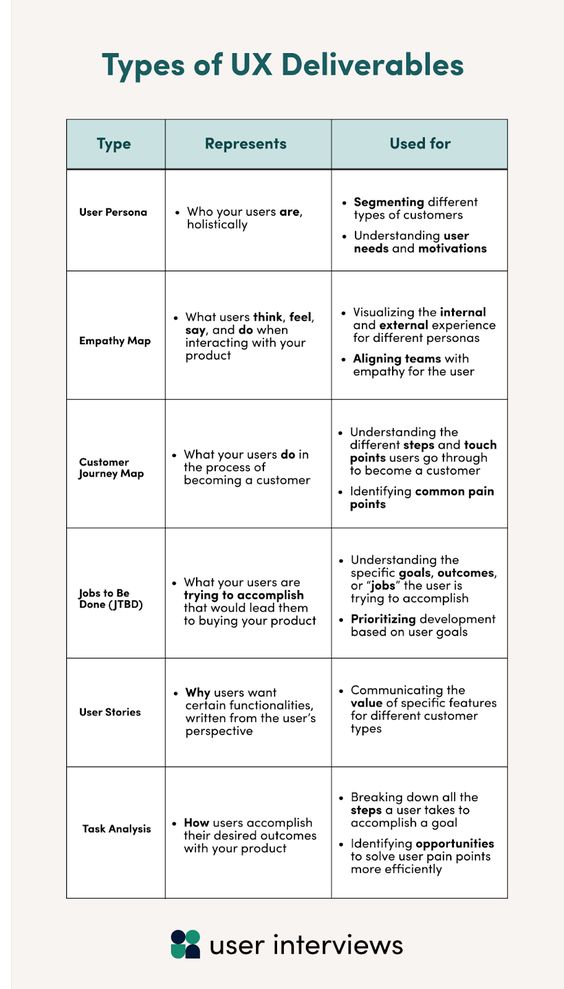
UX research is changing fast. New tools and methods are popping up all the time. These changes are making research easier and more effective.
Current Trends in UX Research
Remote testing is becoming more popular. It lets researchers test with users from all over the world. This gives a wider range of feedback. AI-powered tools are also on the rise. They can analyze user behavior quickly and spot patterns humans might miss.
Mobile testing is growing too. As more people use phones, testing on these devices is key. Eye-tracking tech is getting cheaper and easier to use. It shows exactly where users look on a screen.
Big data is changing UX research. Companies can now study how millions of users interact with their products. This gives insights that weren’t possible before.
The Future of User Experience Testing
Virtual and augmented reality will play a big role in future UX testing. These techs can create realistic test environments. They’ll let researchers see how users act in different settings.
Brain-computer interfaces might become part of UX research. These could show how users think and feel without them having to say anything.
AI will likely get even smarter. It might be able to predict user needs before users know them. This could lead to products that adapt to each person.
Wearable tech will give new ways to collect data. Things like smart watches could track user stress levels during tests. This would show how products affect users emotionally.
UX Research for Specific Contexts
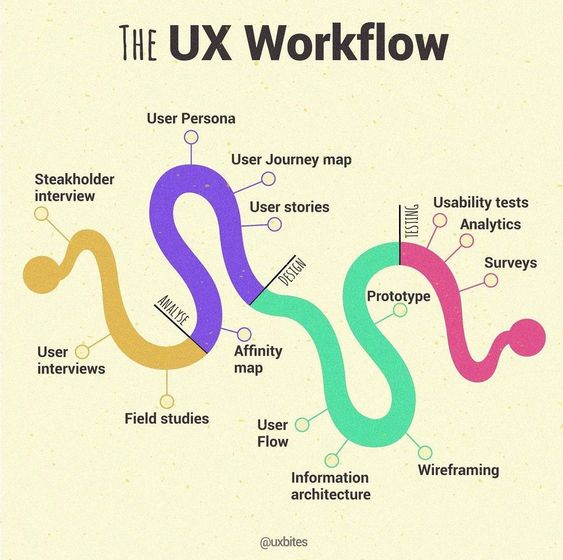
UX research methods vary based on the product or service context. Different environments require tailored approaches to gather meaningful insights and create effective user experiences.
E-commerce and Checkout Processes
E-commerce sites need smooth, user-friendly checkout flows. Researchers can use A/B testing to compare different layouts and button placements. Heat maps show where users click most often on product pages.
Cart abandonment surveys help identify why people leave without buying. User interviews reveal pain points in the shopping process. Usability tests with think-aloud protocols uncover issues with forms and payment steps.
Eye-tracking studies show what product info catches attention first. Session recordings capture real user behavior across the entire purchase journey.
Mobile and Responsive Design
Mobile UX research focuses on touch interactions and small screens. Researchers conduct field studies to see how people use apps in real-world settings.
Guerrilla testing in public places gathers quick feedback on prototypes. Remote unmoderated tests allow users to try apps in their own environment.
Responsive design requires testing across many devices and screen sizes. Researchers use emulators and device labs to check how layouts adapt.
Analytics tools track gestures, taps, and scrolling patterns unique to mobile use. Surveys measure ease of completing tasks on different devices.
Enterprise and B2B Environments
B2B products often have complex workflows and specialized users. Contextual inquiry observes how employees use tools in their actual work setting.
Task analysis breaks down intricate processes into steps. Researchers create user personas to represent different roles and needs within an organization.
Diary studies capture long-term product use over weeks or months. Focus groups with stakeholders align business goals and user needs.
Usability benchmarking compares a product against industry standards. Researchers also test integrations with other enterprise systems.
Frequently Asked Questions
UX research methods help create better products. They uncover user needs and behaviors. Here are some key questions about UX research techniques and their application.
What are the different UX research methods available for use?
UX research methods include surveys, interviews, focus groups, and usability testing. Surveys gather data from many users quickly. Interviews provide deep insights from individuals. Focus groups collect feedback from small user groups. Usability testing shows how people use products in real-time.
How can one determine the most suitable UX research method for a particular project?
Choosing a UX research method depends on project goals and resources. Consider the research questions, timeline, and budget. Think about the type of data needed – qualitative or quantitative. Match the method to the project stage – early discovery or later validation.
What are the main objectives of conducting UX research?
UX research aims to understand users and improve products. It identifies user needs, preferences, and pain points. Research helps create user-friendly designs. It also tests product usability and effectiveness. UX research guides design decisions with real user data.
Can you outline the primary steps involved in the UX research process?
The UX research process starts with defining research goals. Next, researchers choose methods and recruit participants. They then conduct the research and collect data. Analysis follows to find patterns and insights. The final step is reporting findings to the team.
In what ways can Usability Testing enhance the UX of a product?
Usability testing improves products by showing real user interactions. It reveals navigation issues and confusing features. Testing helps fix problems before product launch. It also validates design choices with actual users. Usability data guides updates to make products more user-friendly.
How are quantitative methods integrated into UX research practices?
Quantitative methods add numbers to UX research. They include surveys, analytics, and A/B testing. These methods measure user behavior and preferences. They provide statistical data to support design decisions. Quantitative research complements qualitative insights for a full picture.
- 470shares
- Facebook0
- Pinterest470
- Twitter0
- Reddit0


